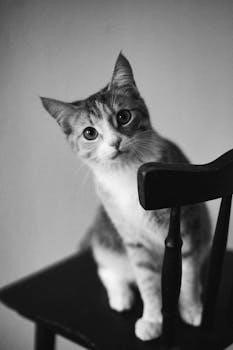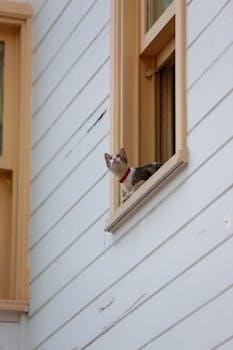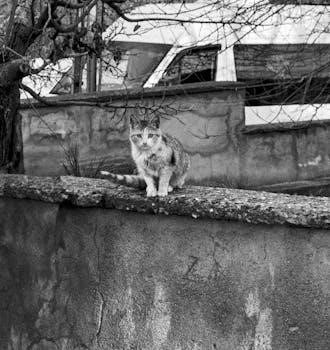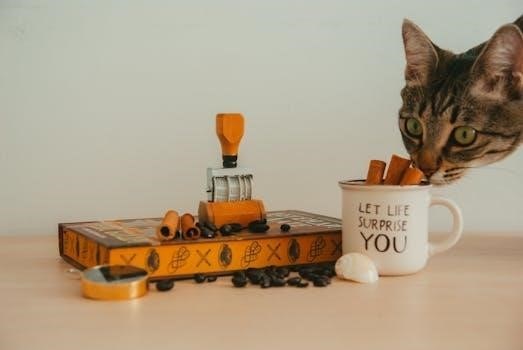
Overview of “If You Give a Cat a Cupcake”
This book, part of the beloved “If You Give…” series, explores a comical chain reaction. It starts with a simple act, giving a cat a cupcake. This leads to a series of increasingly silly and fun events. The story is circular, with a playful ending.
Basic Premise
The core idea of “If You Give a Cat a Cupcake” revolves around the concept of cause and effect, presented in a humorous and exaggerated way. The story starts with the simple act of offering a cat a cupcake, which triggers a cascade of requests and actions. The narrative highlights how one seemingly small event can lead to a series of increasingly outlandish scenarios. It is a “slippery slope” of sorts, where each action prompts another, leading the cat and the child on an unexpected adventure. This cause-and-effect relationship is the fundamental building block of the story’s charm and appeal, showcasing the amusing consequences of a simple, initial offering. The book is designed to show children how simple actions can have unexpected outcomes.
The Chain of Events
The story unfolds with a clear and whimsical progression of events. After receiving a cupcake, the cat immediately wants sprinkles, which inevitably get spilled. Cleaning up the mess leads to the cat getting hot, prompting a need for a bathing suit. This is just the beginning of the cat’s demands. The cat then embarks on a series of activities including going to the beach, the gym, and a museum. The sequence is circular, with the cat ultimately wanting another cupcake to accompany the sand that reminds him of sprinkles. The events are connected, and each action results in a new, more comical situation, creating a predictable yet engaging narrative for young readers.

Character Analysis
The book features two main characters⁚ a demanding cat and a compliant child. Their interactions drive the story’s humor, highlighting their contrasting personalities. The cat is mischievous and energetic, while the child is helpful and patient.
The Cat’s Personality
The cat in “If You Give a Cat a Cupcake” is a delightfully demanding and mischievous character. Initially, the cat seems innocent, simply wanting sprinkles to accompany his cupcake. However, his desires quickly escalate, revealing an adventurous and somewhat bossy nature. He’s energetic, leading the child on a series of unexpected escapades. This cat is not content with simple pleasures; he craves excitement and engages in activities with great enthusiasm. He has a knack for finding trouble and relies on the child’s willingness to indulge his every whim. The cat’s charmingly persistent and playful personality makes him an engaging character for young readers.
The Child’s Role
The child in “If You Give a Cat a Cupcake” plays the role of a kind and accommodating companion. This character is incredibly patient and goes along with the cat’s escalating demands. The child’s actions drive the narrative, fulfilling each request from sprinkles to a trip to the beach. This character is portrayed as helpful and enthusiastic, always ready to participate in the cat’s next adventure. Despite the chaos, the child remains good-natured and willing. They become a partner in the cat’s playful antics, highlighting themes of flexibility and responsiveness to a friend’s desires. The child’s role is crucial for the book’s circular pattern.

Themes and Educational Value
The book explores the concept of cause and effect through a humorous chain of events. It also encourages imagination and the importance of having fun. The story is a great way to teach children about sequences.
Cause and Effect
The core of “If You Give a Cat a Cupcake” lies in its clear demonstration of cause and effect. The story begins with the simple act of giving a cat a cupcake. This seemingly small action sets off a chain of events, where each subsequent action is a direct consequence of the previous one. The cat’s request for sprinkles is a result of the cupcake, the spilled sprinkles lead to cleaning, and the cleaning leads to the need for a bathing suit. This pattern continues throughout the book, illustrating how one action can have a series of unexpected and often humorous results. This makes the book an excellent tool for introducing young children to the concept of cause and effect in an engaging and relatable way. The book highlights the interconnectedness of events;
Imagination and Fun
Beyond the clear cause-and-effect structure, “If You Give a Cat a Cupcake” is a celebration of imagination and fun. The book’s escalating series of events, from needing a bathing suit to visiting the beach, the gym, and the museum, showcases the boundless possibilities of a child’s imagination. The story’s absurdity encourages young readers to embrace silliness and think outside the box. The cat’s whimsical demands and the child’s enthusiastic responses create a playful atmosphere. The illustrations complement the text, bringing the chaotic yet enjoyable adventure to life. The book inspires children to imagine their own silly scenarios, making reading an enjoyable and imaginative experience. It promotes creative thinking and a lighthearted approach to everyday activities.

Book Details
This book is written by Laura Numeroff and illustrated by Felicia Bond. It’s a 32-page hardcover published by Laura Geringer. The book is aimed at children from ages 4 to 8 and is suitable for grades P to 3.
Author and Illustrator
Laura Joffe Numeroff, the author, is a New York Times best-selling writer known for her “If You Give…” series. She was born in Brooklyn, New York, and graduated from Pratt Institute. Beyond this series, she has also written other popular children’s books. Numeroff is an avid animal lover and is involved with several children’s charities. The illustrations are done by Felicia Bond, who is well known for her work on the “If You Give…” series. Her style is distinctive and charming, perfectly complementing Numeroff’s playful text, and bringing the mischievous cat and the child’s adventures to life with vibrant, engaging images that captivate young readers.
Target Audience
The book “If You Give a Cat a Cupcake” is primarily aimed at children between the ages of 3 and 8, specifically those in preschool through the third grade. It is designed as an engaging read-aloud for younger children. The book’s simple, rhythmic text and cyclical structure make it ideal for early readers as well. The content and illustrations are well-suited for young audiences, providing both entertainment and an introduction to cause-and-effect relationships. Its playful and lighthearted nature appeals to kids while also providing educational value. The book is suitable for both home and classroom settings.

Series Context
“If You Give a Cat a Cupcake” is part of the popular “If You Give…” series by Laura Numeroff. It follows a similar pattern of cause and effect as other books in the series.
Part of the “If You Give…” Series
This book is a delightful addition to Laura Numeroff’s well-known “If You Give…” series, which is celebrated for its circular narratives and humorous cause-and-effect scenarios. Like its predecessors, “If You Give a Cat a Cupcake” presents a chain of events triggered by a simple act, in this case, offering a cupcake to a cat. The series is characterized by its playful exploration of consequences, creating a world where one small action can lead to a series of increasingly absurd and entertaining situations. The series is cherished for its engaging style, making it a favorite among young readers. This book fits seamlessly into this tradition.
Comparison to Other Books in the Series
While sharing the same circular narrative structure, “If You Give a Cat a Cupcake” differentiates itself with a focus on a cat as the main character, a departure from the mouse or pig seen in earlier books. Like others in the series, it starts with a simple act, but the cat’s subsequent actions lead to a more varied and somewhat water-themed adventure, differing from the more domestic settings of some of the earlier books. The book retains the series’ signature humor, but the specific chain of events and activities are unique. It does, however, also have the same cause-and-effect theme as the other books.